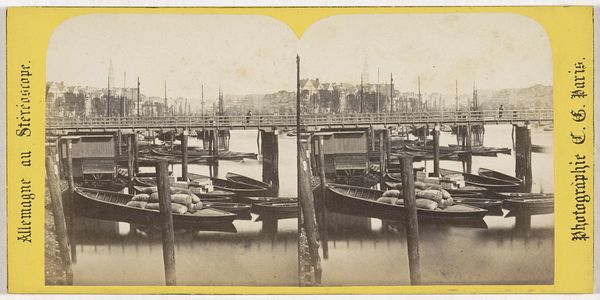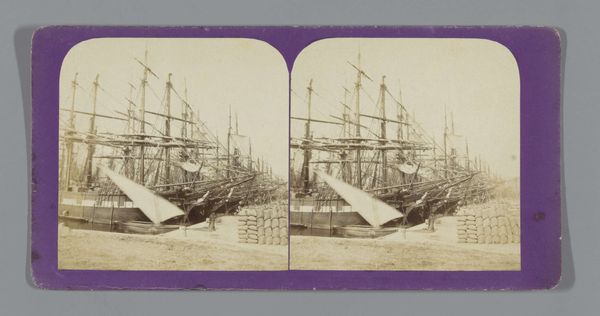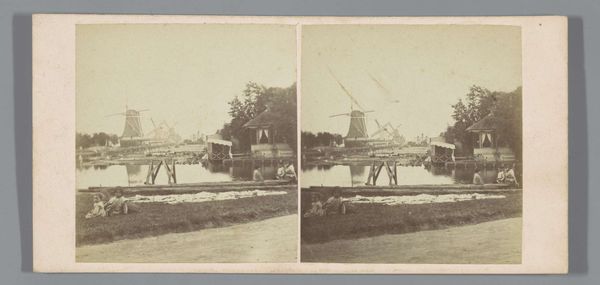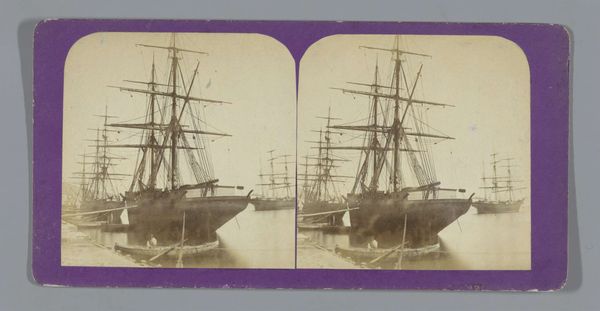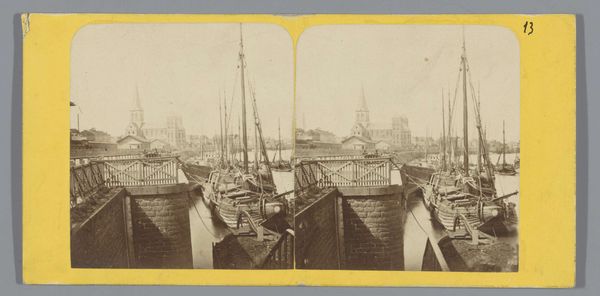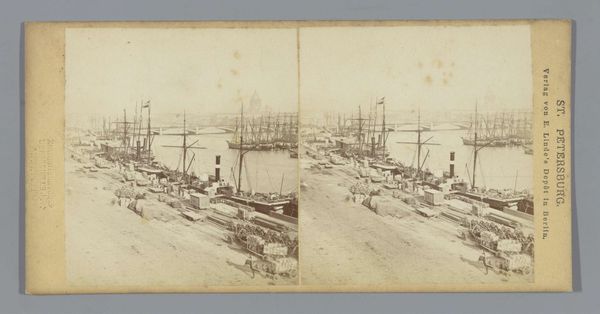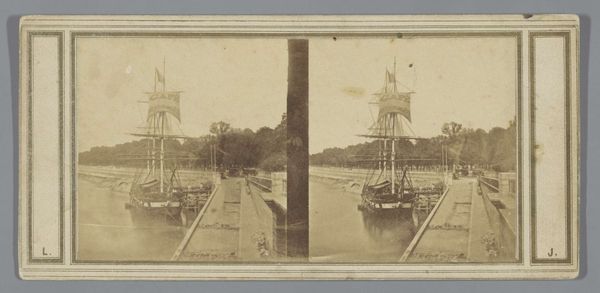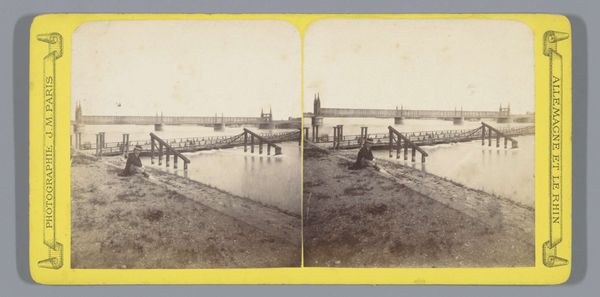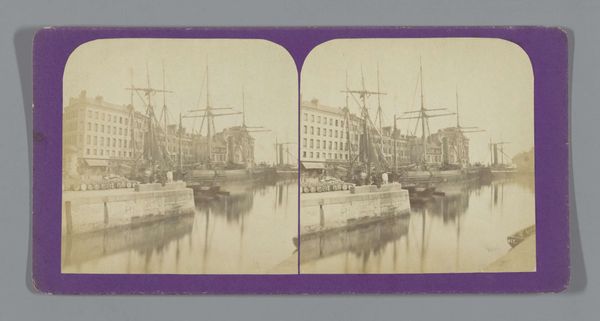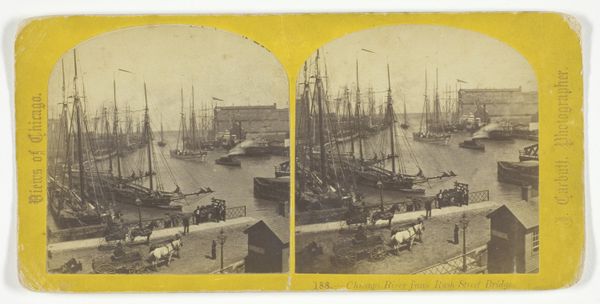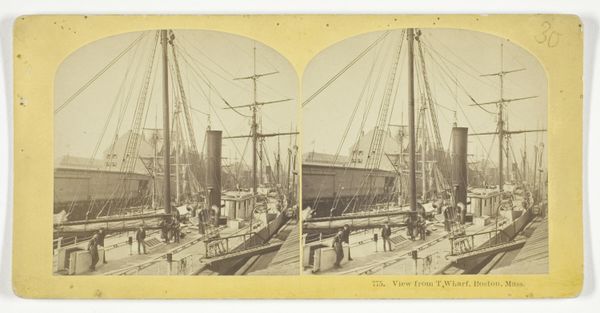
Gezicht op de Schelde met twee schepen en de stad Antwerpen op de achtergrond 1866 - 1870
0:00
0:00
juleshippolytequeval
Rijksmuseum
photography, gelatin-silver-print
#
landscape
#
photography
#
gelatin-silver-print
#
cityscape
Dimensions: height 86 mm, width 175 mm
Copyright: Rijks Museum: Open Domain
Curator: I see a ghostly calm here, almost spectral. There’s something about this scene that whispers of memory. Editor: Indeed. This is a gelatin-silver print, dating from 1866 to 1870, and attributed to Jules Hippolyte Quéval. It offers a striking view of the Scheldt River, including a couple of ships, and a glimpse of Antwerp in the background. We can analyze how the choice of photographic process would imply it's creation. Curator: Gelatin-silver, of course. Makes you wonder about the darkroom alchemy. Though the content…it evokes a sense of impermanence, all captured in silver. The boats look weary, as if resting for a spell. What about the human impact on the river? Did Antwerp trade impact the water at all? Editor: Consider the rising middle class who may have wanted photography of this nature? Likely merchants whose income depended on the waterways as well as an expanding market? I mean we also think about how Antwerp itself became a major economic player. Curator: A portrait of potential consumers through images of consumption? And yet, there's a real tranquility to it. Do you think it idealized their labor in some sense, despite what the photographic landscape looks like? Editor: Well, photography was definitely deployed as a form of idealization, but there's something straightforward in Qu\u00e9val's rendering. It's less concerned with manipulating a vision, and focused on presenting what was available, making photography available to the common family for purchase. Curator: A simple photograph is rare to be so full of possibility; to tell so many stories in grayscale. It brings me comfort in many ways. I also understand this could never be more. Editor: It really highlights the intricate relationship between art, labor, industry, and commerce back then. And still is a valuable window today.
Comments
No comments
Be the first to comment and join the conversation on the ultimate creative platform.
